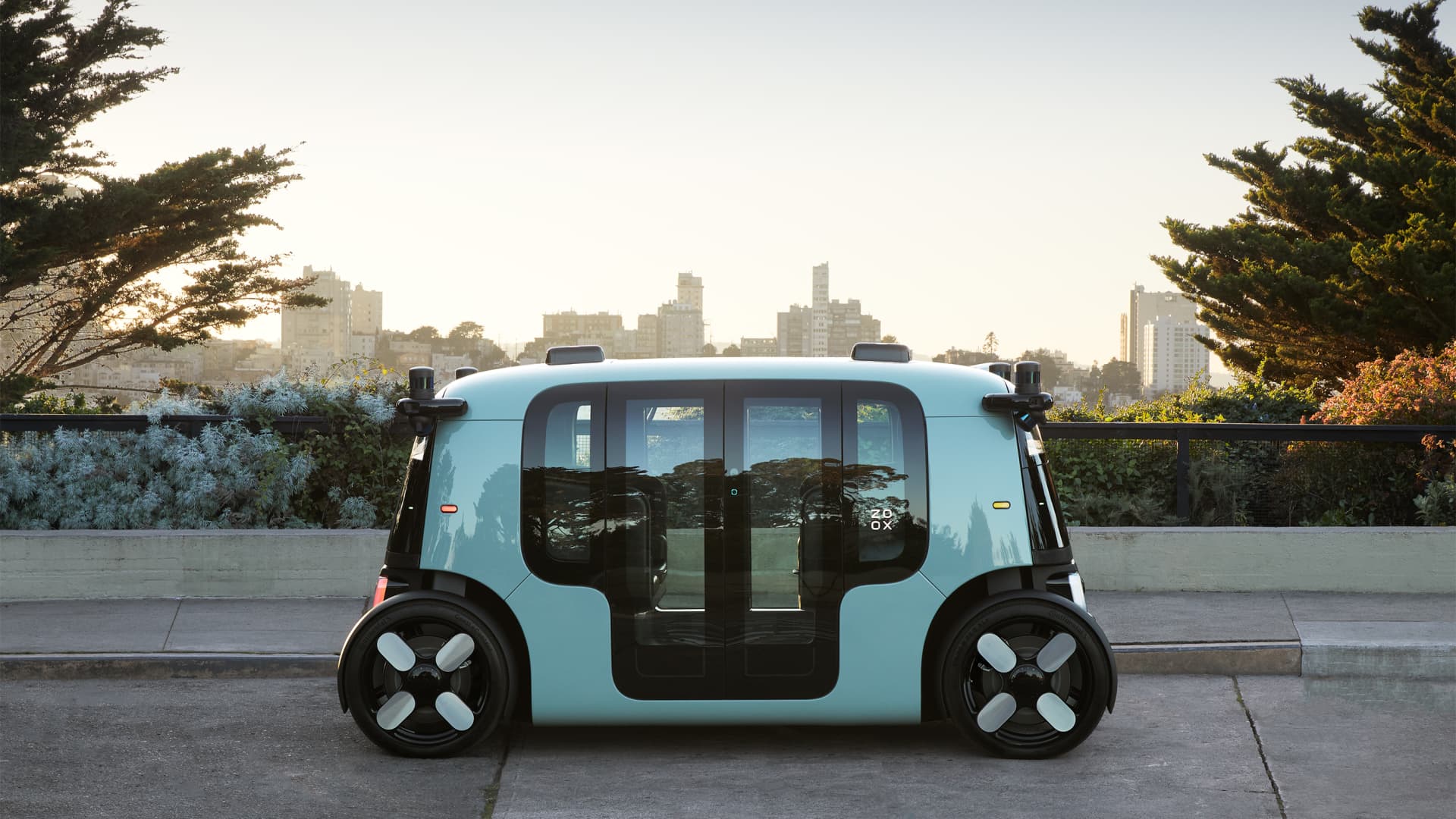
Amazon’s self-driving company Zoox unveiled its autonomous robotaxi on Monday.
Zoox
Amazon-owned autonomous vehicle venture Zoox said on Monday that it is now testing its self-driving robotaxis on public roads in California with passengers on board.
The vehicles have no steering wheel or pedals, and they have bidirectional driving capabilities and four-wheel steering, enabling them to change directions without the need to reverse.
Zoox executives said the company began the tests after it received approval from the California Department of Motor Vehicles last week.
The permit is not for all public roads in the state. The tests are currently limited to shuttling Zoox employees on a one-mile public route between two office buildings at the company’s headquarters in Foster City, California, at speeds up to 35 miles an hour. The company hasn’t said how big its test fleet is, but executives have said they have built “dozens” of vehicles, although fewer than 100.
Zoox said one of its vehicles completed a test run with employees on board over the weekend.
Amazon acquired the 9-year-old startup in 2020 and, at the time, shared few details about how it planned to use the company’s technology. Zoox unveiled its custom-built, electric robotaxi in 2020, with an eye on offering on-demand autonomous transportation in urban settings.
On a call with reporters, Zoox executives declined to say when the company will launch a commercial robotaxi service or open up testing beyond the limited route and employee participants. It will continue to test the vehicle with employees and expects to launch a shuttle service for staffers this spring.
GM‘s driverless unit, Cruise, has also developed an autonomous shuttle called Origin which does not have manual controls. Cruise and Alphabet‘s Waymo last year received approval to roll out their driverless taxi services in California and charge passengers for the rides.
Unlike Cruise, Zoox says its driverless vehicles — which do not have a steering wheel or other manual controls — meet Federal Motor Vehicle Safety Standards, and so the company is not seeking any waiver to put them into use on public roads.
All companies testing their vehicles on public roads in the state of California are required to report every time their system disengages or whenever a human driver has to take over for the autonomous system while driving, usually due to safety concerns or software issues.
Zoox doesn’t even refer to these incidents as disengagements, but rather as cases where the vehicle needs support or guidance, so does not report them to the state.
“If the vehicle is in a situation where it needs help because either it needs to do something it’s not normally allowed to do, or because it doesn’t know how to handle a situation, we have what’s called a ‘fusion center,’ with trained guidance operators monitoring the output of the scene and then will give guidance to the vehicle and either give it permission to do something — but the vehicle is still in charge and does all the driving — or drop breadcrumbs on alternative trajectory, or in the worst-case scenario pull over,” Zoox CEO Aicha Evans told reporters.
— CNBC’s Lora Kolodny contributed reporting to this article.
WATCH: Tesla FSD Beta users show how the system works — and doesn’t





